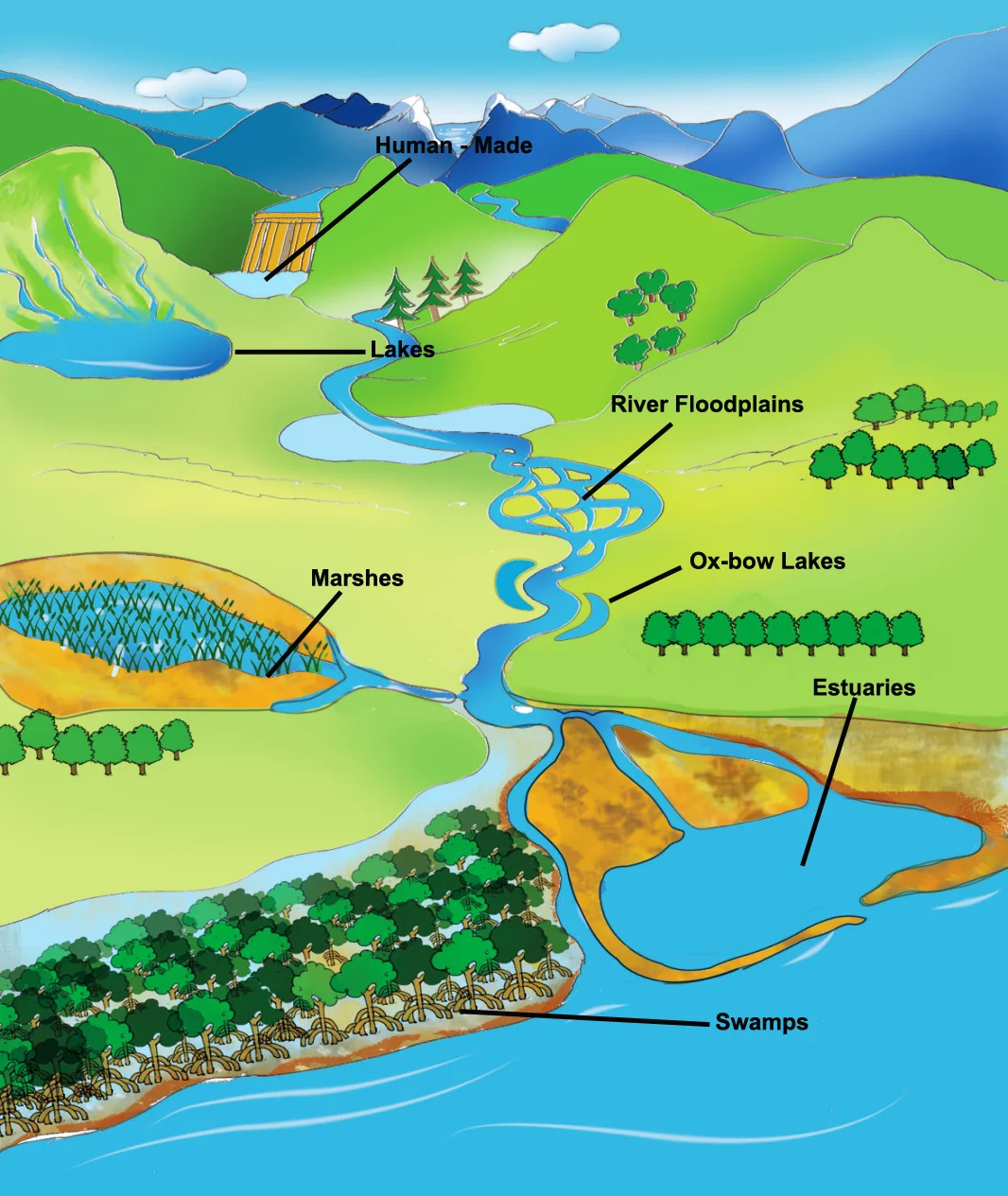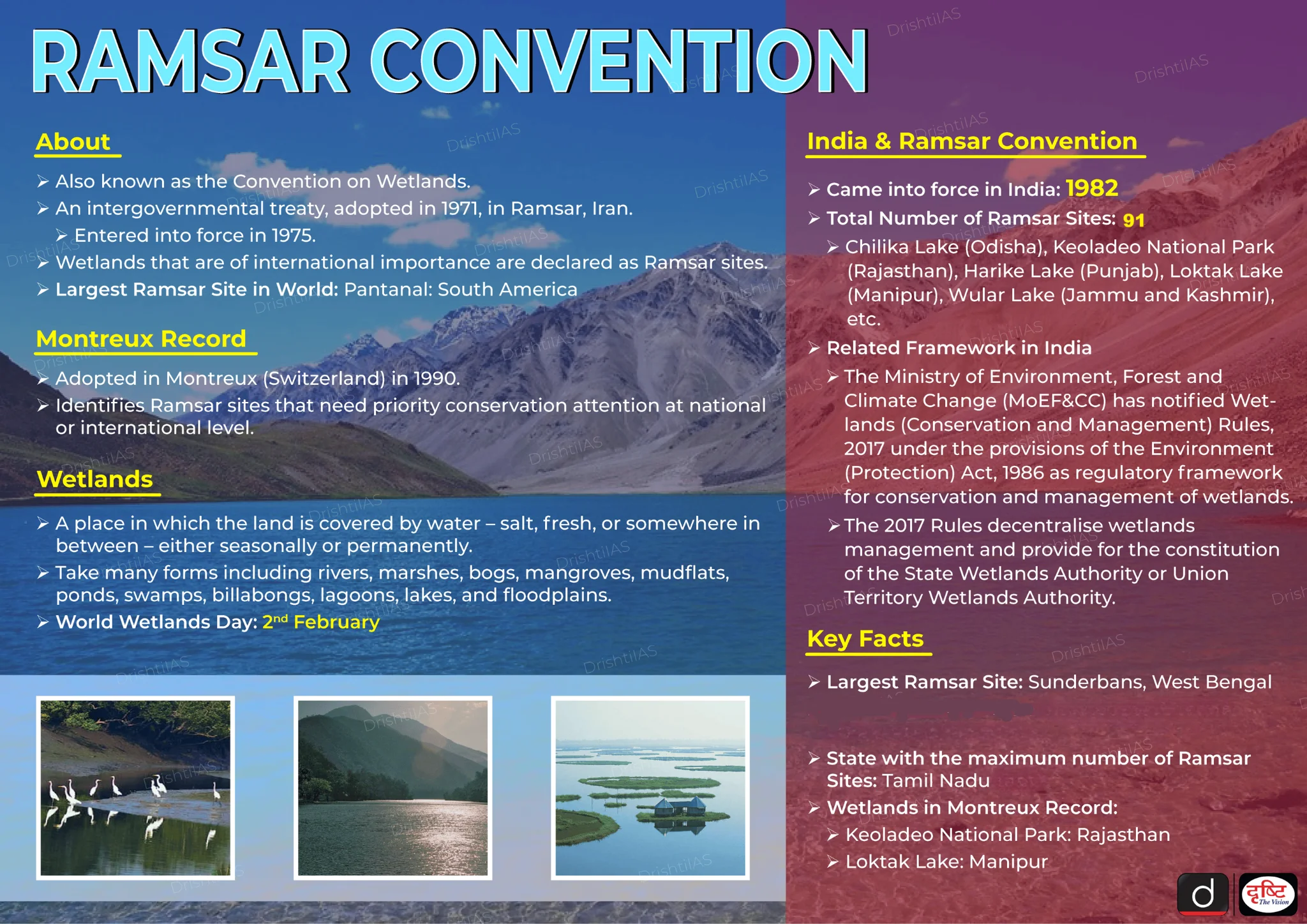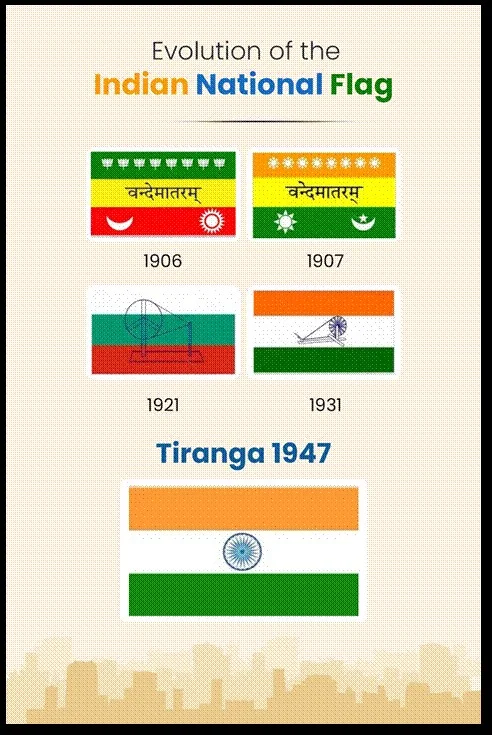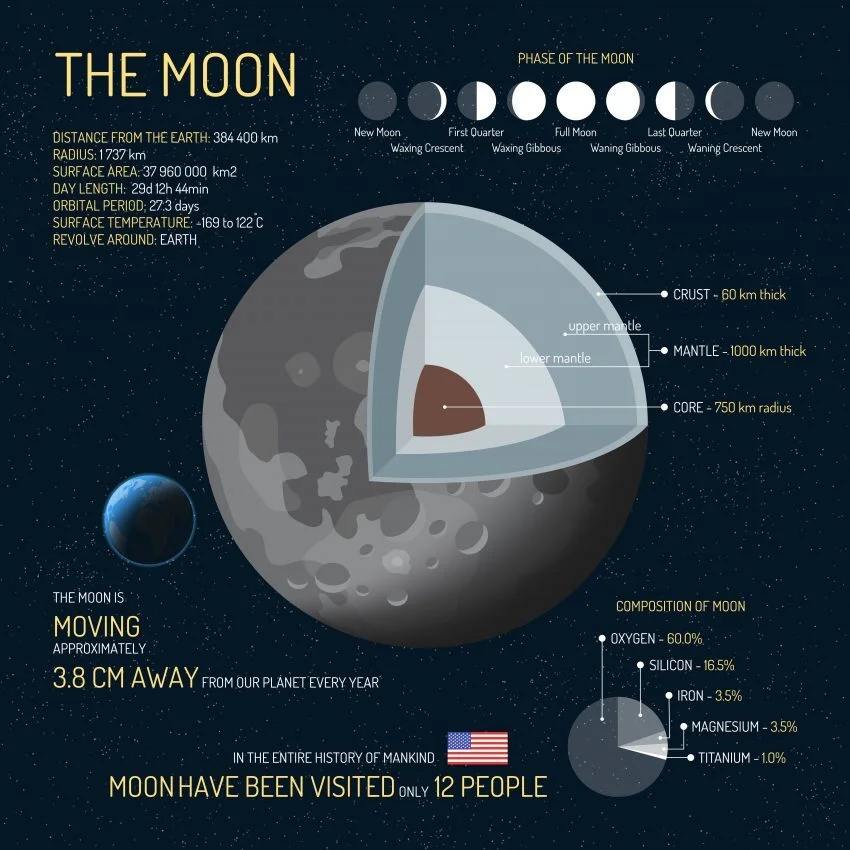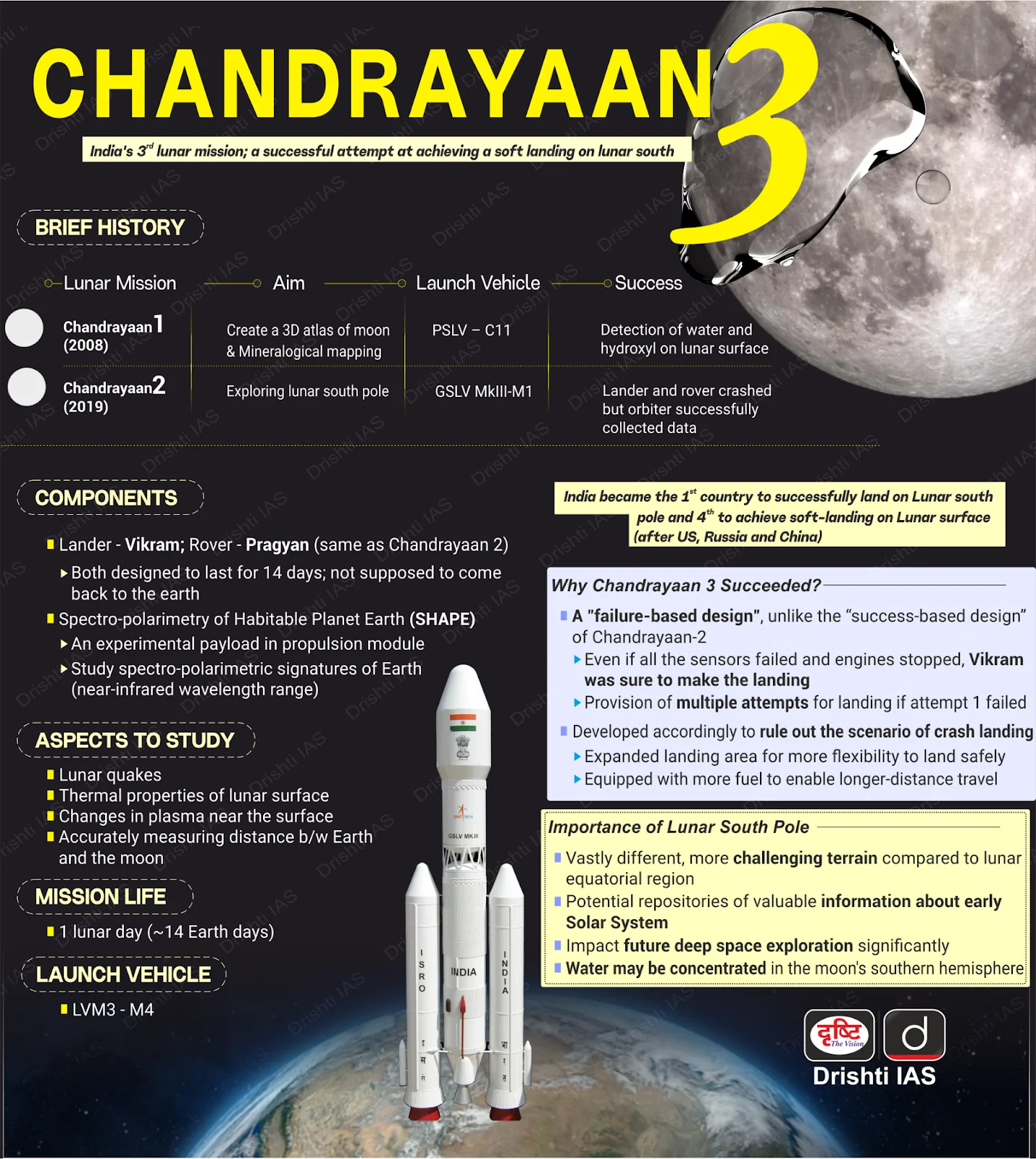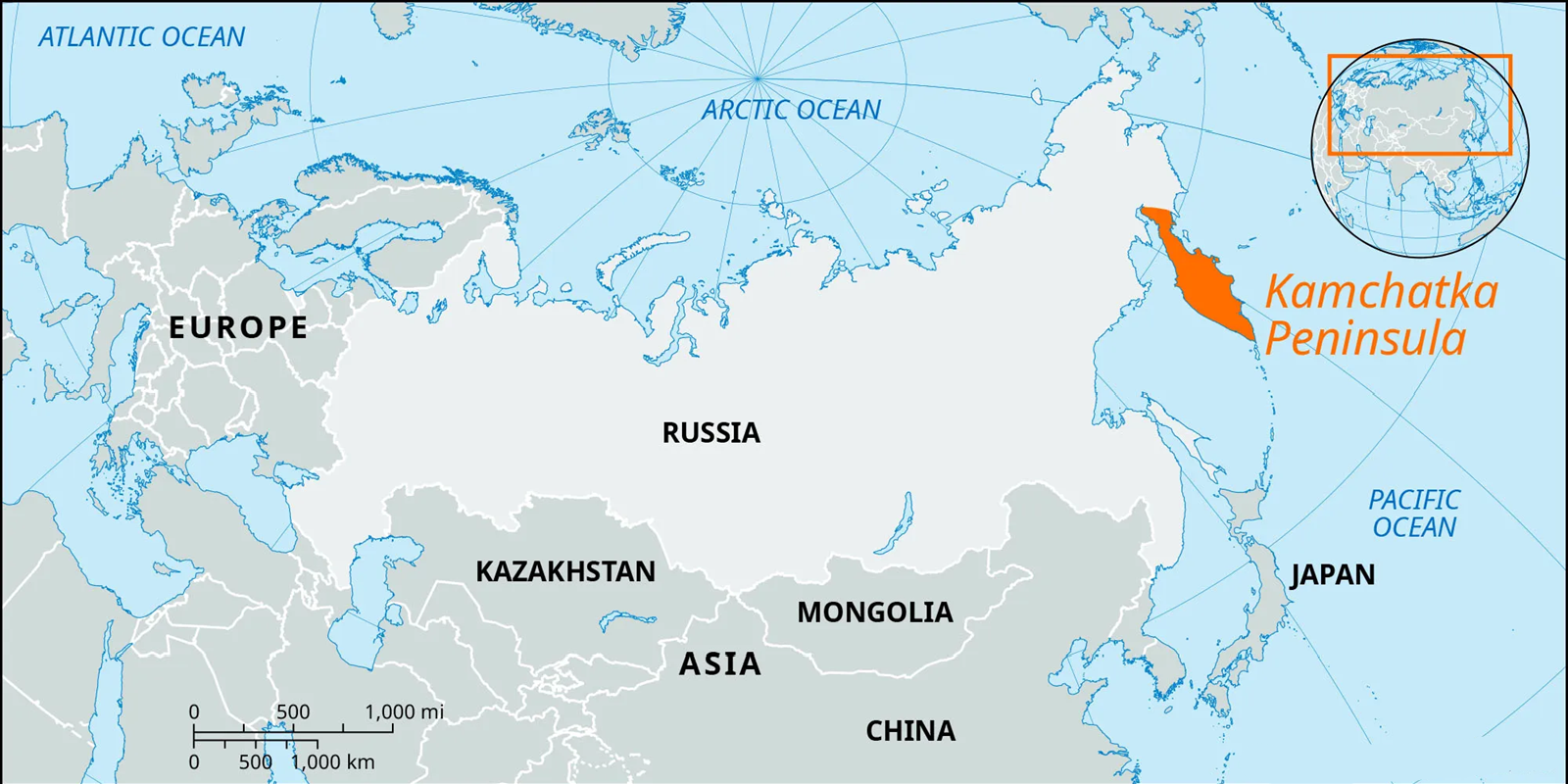Mid-Term Resignation of Vice-President of India
For Prelims: Vice-President of India, President, Election Commission of India, Proportional representation
For Mains: Significance of the Vice-President’s role in India’s parliamentary democracy, Comparison of Indian and US Vice Presidents
Why in News?
Vice-President of India Jagdeep Dhankhar resigned from his post, and submitted his resignation to President Droupadi Murmu under Article 67(a) of the Constitution. He is the third Vice-President in India’s history to step down before completing his term, after V.V. Giri and R. Venkataraman.
What are the Constitutional Provisions and Procedures if the Vice-President of India Resigns Mid-Term?
- Resignation: The Vice-President can resign by writing under his hand, addressed to the President, as per Article 67(a) of the Constitution. The resignation takes effect immediately once submitted.
- Since the Vice-President of India also serves as the ex-officio Chairman of the Rajya Sabha, the resignation creates a temporary gap in parliamentary leadership.
- The Constitution does not provide for an acting Vice-President. However, in the Vice-President’s absence, the Deputy Chairman of the Rajya Sabha will preside over its proceedings.
- Election to Fill the Vacancy: The election of the next Vice-President is to be held within 60 days of the expiry of the outgoing Vice-President's term. However, in the case of a mid-term resignation, unlike the President (where the vacancy must be filled within six months), there is no fixed time frame for electing a new Vice-President.
- The only requirement is that the election be held “as soon as possible.”
- The Election Commission of India conducts the election under the Presidential and Vice-Presidential Elections Act, 1952. Traditionally, the Secretary General of either House of Parliament is appointed as the Returning Officer for the poll, on a rotational basis.
- Tenure of the New Vice-President: The newly elected Vice-President gets a full five-year term, regardless of the remaining tenure of the predecessor.
What are the Key Facts About Vice‑President of India?
- About: The Article 63 of the Indian Constitution states that there shall be a Vice President of India, who is the second-highest constitutional authority after the President. The post is modeled on the American Vice President.
- Articles 63 to 71 of the Constitution deal with the Vice President.
- Election & Eligibility:
- Electoral College: Elected by MPs from both Houses of Parliament (elected and nominated members) but state legislators do not participate (Article 66).
- Voting Process: Conducted via proportional representation and single transferable vote, by secret ballot, overseen by a Returning Officer (usually the Secretary General of either House).
- Eligibility Criteria: Must be an Indian citizen, at least 35 years old, qualified for Rajya Sabha membership, not hold an office of profit, and should not be a member of Parliament or state legislature.
- Oath: The Vice President takes an oath, administered by the President or a designated person, to uphold the Constitution and faithfully discharge the duties of the office (Article 69).
- Term, Resignation & Vacancy:
- Term Duration: Serves a five-year term (Article 67), and can continue beyond expiry until a successor takes office.
- Resignation: May resign at any time via a written letter to the President (Article 67(a)).
- Vacancy: Vacancies arise due to term expiry, resignation, removal, death, or disqualification. A new election must be held "as soon as possible" (Article 68).
- Primary Roles: Acts as ex‑officio Chairman of the Rajya Sabha (Council of States) (Article 64) but does not vote except in case of a tie.
- The Vice-President acts as President (Article 65) during a vacancy caused by death, resignation, removal, or otherwise, until a new President is elected within six months.
- If the President is absent or ill, the Vice-President acts in their place with full powers and benefits until the President returns.
- The Vice-President acts as President (Article 65) during a vacancy caused by death, resignation, removal, or otherwise, until a new President is elected within six months.
- Removal Procedure: Can be removed by a resolution in the Rajya Sabha (effective majority (more than 50% of the effective strength (i.e., total membership minus any vacancies)) and approved by Lok Sabha (simple majority).
- A 14-day notice must be given before moving such a resolution, clearly stating the intention.
What is the Role of the Vice President of India as the Chairman of the Rajya Sabha?
- Presiding Over Sessions: The Chairman conducts proceedings in the Rajya Sabha, maintains order, and ensures discipline and decorum in the House.
- Under Rule 256 of Procedure and Conduct of Business in the Rajya Sabha, the Chairman can suspend a member for the remainder of the session if the member's conduct is grossly disorderly or disregards the authority of the Chair.
- The Chairman interprets and decides on procedural issues raised during sessions.
- Maintaining Neutrality and Order: As a non-member of the House, the Chairman is expected to remain impartial while allowing free and fair debates. They ensure equal participation and adherence to parliamentary norms.
- Casting Vote: Though the Chairman does not vote in the first instance, they can cast a deciding vote in the event of a tie (Article 100).
- Referral to Committees: The Chairman plays an administrative role by referring bills, motions, and resolutions to parliamentary committees for detailed consideration.
- Limitations Compared to Lok Sabha Speaker: The Chairman does not preside over joint sittings of Parliament. The Chairman cannot certify a bill as a Money Bill (only the Lok Sabha Speaker can).
- In Case of Presidential Vacancy: When the Vice President acts as or discharges the functions of the President, they temporarily stop performing duties as Chairman. The Deputy Chairman then takes over.
Vice President of India vs US
|
Feature |
India |
United States |
|
Presiding Role |
Chairman of Rajya Sabha (Upper House). |
Chairman of the Senate (Upper House). |
|
Voting Power |
Only votes in case of a tie in Rajya Sabha. |
Only votes in case of a tie in the Senate. |
|
Succession to President During Vacancy |
Acts as President temporarily (max 6 months). |
Becomes full President for remainder of term. |
|
Executive Role |
Mostly ceremonial, steps in only if needed. |
Part of the executive branch, often has an active role. |
|
Drishti Mains Question: The office of the Vice-President of India is often viewed as ceremonial, yet it plays a key role in ensuring parliamentary stability. Discuss. |
UPSC Civil Services Examination, Previous Year Question (PYQ)
Mains
Q. Discuss the role of the Vice –Presidents of India as the chairman of the Rajya Sabha. (2022)
Global Wetland Outlook 2025
For Prelims: Ramsar Convention, International Union for Conservation of Nature, Kunming-Montreal Global Biodiversity Framework, Sustainable Development Goals
For Mains: Ramsar Convention and India’s commitments, Role of wetlands in achieving SDGs
Why in News?
The Global Wetland Outlook (GWO) 2025, released by the Secretariat of the Ramsar Convention (1971), highlights that Africa’s wetlands are among the most degraded in the world.
Note: The Ramsar Convention Secretariat is based in Gland, Switzerland. The International Union for Conservation of Nature (IUCN) supports its operations by providing administrative services to the Convention’s member countries.
What are the Key Takeaways from Global Wetland Outlook 2025?
- Global Wetland Coverage: Wetlands (Seagrass, Kelp Forests, Coral Reefs, Estuarine Waters, Salt Marshes, Mangroves, Tidal Flats, Lakes, Rivers and Streams, Inland Marshes and Swamps, and Peatlands) cover over 1,800 million hectares globally, including inland freshwater, coastal, and marine ecosystems.
- However, data uncertainty persists due to inconsistent methods and gaps in historical data.
- Loss and Degradation: Since 1970, the world has lost about 411 million hectares of wetlands, marking a 22% global decline at an average annual loss rate of -0.52%.
- Wetlands in Africa, Latin America, and the Caribbean are facing the worst levels of degradation, but ecological deterioration is also rising in Europe, North America, and Oceania.
- Wetlands are in the worst condition in Least Developed Countries (LDCs). In upper-middle-income and developed countries, more wetlands are reported in good condition than poor.
- Value of Wetlands: Wetlands provide food, water filtration, disaster protection, carbon storage, and cultural value.
- The ecosystem service value of global wetlands is estimated at USD 39 trillion. Wetlands make up just 6% of Earth's surface but deliver ~7.5% of global GDP in value.
- Over 60% of GDP in some African countries comes from nature-based sectors. Wetland loss increases climate risks and lowers productivity. Investing in wetlands is a smart, cost-effective step toward sustainable growth.
- Wetland Funding Gap: Biodiversity funding is just 0.25% of global GDP, far too low to meet current needs.
- Recommendations:
- Wetland Conservation: It calls for urgent action to align with the Kunming-Montreal Global Biodiversity Framework (KM-GBF), particularly Target 2 (restoring at least 30% of all degraded ecosystems) and Target 3 (conserving at least 30% of land, waters, and seas).
- To meet these goals, around 123 million hectares of wetlands must be restored, possibly exceeding 350 million hectares if degraded wetlands are included.
- Additionally, about 428 million hectares need to be effectively managed through protected areas or conservation measures.
- This effort supports climate goals under the UN Framework Convention on Climate Change (UNFCCC), Sustainable Development Goal 6.6 on water ecosystems.
- Conservation Over Costly Restoration: Conserving healthy wetlands is far cheaper than restoring degraded ones, which can cost anywhere from USD 1,000 to over USD 70,000 per hectare annually.
- Boost Investment in Nature-Based Solutions (NbS): Encourage both government and private sectors to invest in wetland protection as cost-effective NbS for disaster resilience, climate mitigation, and water security.
- Build capacity and long-term strategies to scale up wetland investments globally.
- Wetland Conservation: It calls for urgent action to align with the Kunming-Montreal Global Biodiversity Framework (KM-GBF), particularly Target 2 (restoring at least 30% of all degraded ecosystems) and Target 3 (conserving at least 30% of land, waters, and seas).
What are Wetlands?
- About: The Ramsar Convention defines wetlands as areas of marsh, fen, peatland, or water natural or artificial, permanent or temporary with static or flowing water that may be fresh, brackish, or salty, including shallow marine areas up to six meters deep at low tide.
- It also allows inclusion of nearby riparian or coastal zones and deeper marine areas if they lie within the wetland system.
- Major Types of Wetlands:
- Human-made Wetlands: Built for purposes like irrigation, drinking water, fish farming, or recreation. Examples include reservoirs, aquaculture ponds, salt pans, dams, and barrages.
- Nagi and Nakti Bird Sanctuaries in Bihar, now Ramsar Sites, are human-made wetlands created for irrigation via the Nakti Dam.
- Lakes and Ponds: Inland freshwater bodies that support diverse plant and animal life.
- River Floodplains: Low-lying areas next to rivers that flood periodically. The Yamuna floodplains, for instance, are Delhi’s key water source.
- Bakhira Wildlife Sanctuary is a floodplain wetland in Uttar Pradesh, with the Rapti River flowing through it.
- Oxbow Lakes: Crescent-shaped waterbodies formed when river meanders are cut off due to silt or course change.
- Common in the Ganga, Brahmaputra, and Mahanadi basins (e.g., Ansupa Lake).
- Kanwar Lake, Bihar (also known locally as Kabartal) is Asia’s largest freshwater oxbow lake.
- Marshes: Wetlands with herbaceous plants, fed by sources like runoff, groundwater, or tides. Example: Kanwar Jheel in Bihar.
- Estuaries: Brackish water zones where rivers meet the sea, like the Chilika Lagoon in Odisha. Coastal lagoons form when sandbars separate sea and river water.
- Swamps: Tree-dominated wetlands with waterlogged soil. Mangroves are coastal swamps. Sunderbans is the largest mangrove swamp in the world.
- Human-made Wetlands: Built for purposes like irrigation, drinking water, fish farming, or recreation. Examples include reservoirs, aquaculture ponds, salt pans, dams, and barrages.
- Ecosystem Services of Wetlands:
- Water Purification: Wetlands act as kidneys of the habitat by purifying water, sequestering huge amounts of carbon (thereby mitigating climate change) and , supporting irrigation, and improving both surface and groundwater quality.
- Storm Protection: Coastal wetlands like mangroves and salt marshes reduce storm surges, flooding, and erosion.
- Flood Control: Absorb excess water during storms, reducing downstream floods and supporting streamflow in drought. Mangroves can lower flood depths by 15–20%, and up to 70% during major storms.
- Erosion Control: Wetland plants stabilize soil and prevent streambank erosion.
- Wildlife Habitat: Wetlands are ecotones rich in both aquatic and terrestrial life, supporting amphibians, birds like ducks and cranes, mammals, and migratory species.
- Wetlands support spawning, feeding, and nursery areas for species like trout, crab, and shrimp.
- High Productivity: Some wetlands (e.g. salt marshes) produce more biomass per acre than most crops.
- Education: Serve as natural classrooms for ecological and cultural learning.
- Status of Wetlands in India: As of August 2024, India has 1,307 identified wetlands covering over 1.35 million hectares, the highest wetland coverage in South Asia.
- Efforts to Conserve Wetlands:
- Ramsar Convention: India ratified the Ramsar Convention in 1982, naming Keoladeo National Park and Chilika Lake as its first two Ramsar Sites. With Khichan and Menar in Rajasthan added in 2025, India now has 91 Ramsar Sites, showing its continued focus on wetland conservation.
- The Montreux Record is a list of Wetlands of International Importance under the Ramsar Convention that are facing, or are likely to face, ecological damage.
- India currently has two wetlands on the Montreux Record: Keoladeo National Park in Rajasthan and Loktak Lake in Manipur.
- Wetlands of India Portal (2021): Provides public access to wetland data, maps, and conservation updates.
- National Wetland Decadal Change Atlas: Tracks changes in wetlands using satellite data.
- Amrit Dharohar Scheme (2023): Focuses on eco-tourism, community income, biodiversity enhancement, and carbon storage in wetlands.
- Integration with Namami Gange: Aligns wetland conservation with river basin management, especially in the Ganga basin.
- World Wetlands Day: Observed on 2nd February to mark the adoption of the Ramsar Convention on Wetlands in 1971 in Ramsar, Iran.
- Ramsar Convention: India ratified the Ramsar Convention in 1982, naming Keoladeo National Park and Chilika Lake as its first two Ramsar Sites. With Khichan and Menar in Rajasthan added in 2025, India now has 91 Ramsar Sites, showing its continued focus on wetland conservation.
|
Drishti Mains Question: Discuss the ecological and economic importance of wetlands. |
UPSC Civil Services Examination Previous Year Question (PYQ)
Q. If a wetland of international importance is brought under the ‘Montreux Record’, what does it imply?(2014)
(a) Changes in ecological character have occurred, are occurring or are likely to occur in the wetland as a result of human interference
(b) The country in which the wetland is located should enact a law to prohibit any human activity within five kilometres from the edge of the wetland
(c) The survival of the wetland depends on the cultural practices and traditions of certain communities living in its vicinity and therefore the cultural diversity therein should not be destroyed
(d) It is given the status of ‘World Heritage Site’
Ans: (a)
National Flag Day 2025
Why in News?
India observed National Flag Day (Tiranga Adoption Day), on 22nd July 2025, to mark the anniversary of the Indian National Flag's official adoption by the Constituent Assembly in 1947.
What are the Key Facts About the Indian National Flag?
- Evolution of the Indian National Flag:
- 1904: Designed by Sister Nivedita, it featured red and yellow with a Vajra (strength), a white lotus (purity), and "Bande Mataram" inscribed.
- Sister Nivedita was an Irish social activist and a disciple of Swami Vivekananda.
- 1906 (Swadeshi Movement Flag): Considered the first tricolour, it was hoisted in Calcutta with green, yellow, and red horizontal stripes. It featured lotuses, a sun, a crescent moon, and the words "Vande Mataram".
- 1907 (Saptarishi Flag): Hoisted by Madam Bhikaji Cama in Germany. It had green, saffron, and red stripes with lotuses, "Vande Mataram", a sun, and a crescent moon.
- 1917 (Home Rule Movement Flag): Introduced by Annie Besant and Tilak. It had red and green stripes, the Union Jack, crescent and star, and stars in the Saptarishi pattern.
- 1921: Pingali Venkayya (an Indian freedom fighter, linguist, and polymath from Andhra Pradesh), proposed a red, white, and green flag with a spinning wheel, symbolising unity and self-reliance. The design of the present Indian flag is largely attributed to him.
- In 1931 Saffron replaced red. The flag had saffron, white, and green with a spinning wheel in the centre. It was adopted by the Indian National Congress.
- 1947 (Present Flag): Adopted by the Constituent Assembly. The spinning wheel was replaced with the Ashoka Chakra.
- 1904: Designed by Sister Nivedita, it featured red and yellow with a Vajra (strength), a white lotus (purity), and "Bande Mataram" inscribed.
- Common name: Tiranga, meaning Tricolour.
- Design: Three horizontal stripes: saffron (kesari) (top), White (middle), Green (bottom), with a navy blue Ashoka Chakra in the centre.
- Ashoka Chakra: The Ashoka Chakra, with 24 spokes, is based on the wheel from the Sarnath Lion Capital made by the 3rd-century BC Mauryan Emperor Ashoka and fits within the width of the white band.
- Symbolism:
- Saffron: Strength and Courage of the Country.
- White: Purity, Truth, and Peace.
- Green: Fertility, growth, and prosperity, reflecting India’s agricultural roots and environmental commitment.
- Ashoka Chakra (known as the “wheel of law”): Represents Law, justice, and the cycle of life. The chakra intends to show that there is life in movement and death in stagnation.
- Flag dimensions: 3:2 ratio (length to height).
- Regulation: Governed by the Flag Code of India, 2002 which sets rules for display, handling, and respect for the flag.
- Article 51A(a) of the Indian Constitution mandates that it is the fundamental duty of every citizen to respect the National Flag and National Anthem.
- The Prevention of Insults to National Honour Act, 1971, punishes offences related to disrespecting the national flag or anthem.
- Material: Traditionally made from hand-spun khadi (cotton), symbolising self-reliance. In 2021, the Flag Code of India, 2002 was amended to allow the national flag to be made from other approved materials, including machine-made and polyester flags.
Note: The National Flag in possession of the Archaeological Survey of India at Fort St George Museum in Chennai is known as the oldest surviving Indian national flag. It was hoisted at Fort St George in Chennai on 15th August 1947.
What is the Flag Code of India, 2002?
- About: The Flag Code of India, 2002, came into effect on 26th January 2002, allowing citizens to hoist the national flag at their homes, offices, and factories on any day, not just on national occasions provided they follow the code's rules.
- The Code is divided into three parts: Part I describes the flag, Part II covers its use by the public and institutions, and Part III outlines its display by government bodies.
- Flag Code outlines the Do's and Don'ts to preserve the dignity and honour of the national flag.
- The Flag Code of India was amended in 2022 to allow the national flag to be flown day and night if displayed in the open or on a private home. Earlier, it was only allowed between sunrise and sunset. The change came ahead of the Har Ghar Tiranga campaign under Azadi Ka Amrit Mahotsav.
- The Do's: The flag may be hoisted in schools and other institutions to promote respect.
- Citizens, private groups, and institutions can display the flag on any day, with dignity.
- It grants all citizens the right to fly the flag on their premises.
- The Don'ts: The flag cannot be used for communal gains, drapery, or clothes.
- The flag cannot be intentionally allowed to touch the ground or the floor or trail in water. It cannot be draped over the hood, top, and sides or back of vehicles, trains, boats or aircraft.
- No other flag, object, or decoration should be placed above or on the flag.
UPSC Civil Services Examination, Previous Year Question (PYQ)
Q. Who among the following is associated with ‘Songs from Prison’, a translation of ancient Indian religious lyrics in English? (2021)
(a) Bal Gangadhar Tilak
(b) Jawaharlal Nehru
(c) Mohandas Karamchand Gandhi
(d) Sarojini Naidu
Ans: (c)
Q. What is the number of spokes in the Dharmachakra in the National Flag of India? (2008)
(a) 16
(b) 18
(c) 22
(d) 24
Ans: (d)
Monsoon Session of Parliament 2025
Why in News?
The 2025 Monsoon Session of Parliament has begun. During the session, the Bills of Lading Bill, 2025, which was passed earlier in the Lok Sabha, was approved by the Rajya Sabha.
What are the Sessions of Parliament?
- Sessions of Parliament: A session refers to the period between the first sitting and prorogation of a House. A recess is the interval between prorogation and reassembly of Parliament. Typically, there are 3 sessions in a year:
- Budget Session (Feb–May)
- Monsoon Session (July–August)
- Winter Session (Nov–Dec)
- Special Sessions: A Special Session of Parliament is convened outside the 3 regular sessions (Budget, Monsoon, Winter) to deliberate on urgent, exceptional, or historic matters of national significance like India-China war in 1962.
- Key Parliamentary Procedures:
- Summoning: Under Article 85 of the Constitution, the President summons each House of Parliament, ensuring that the interval between two sessions does not exceed six months.
- While the Constitution does not specify the number of sessions or sitting days, Parliament typically meets three times a year.
- Adjournment: It refers to the temporary suspension of a parliamentary sitting by the Presiding Officer. It may be for a short duration or for the day.
- Adjournment sine die means suspension without a fixed date for the next sitting.
- It does not end the session, and pending business resumes when the House meets again.
- Prorogation: It is the formal termination of a parliamentary session by the President. After prorogation, the House can meet again only when it is summoned afresh by the President.
- Dissolution: Dissolution marks the end of the Lok Sabha's term, unlike the Rajya Sabha, which is a permanent body. It occurs under the following circumstances: -
- after 5 years, and after an extended term during Emergency, or through the President’s power under Article 85(2).
- The President holds the power to dissolve the Lok Sabha.
- On dissolution, all pending business lapses, except bills originating in the Rajya Sabha not passed by the Lok Sabha,
- Assurances by Ministers on the floor of the House still awaiting implementation.
- Quorum: It is the minimum number of members required to be present to conduct a sitting of either House of Parliament. As per the Constitution, it is one-tenth of the total strength of the House.
- Hence, 55 members in Lok Sabha and 25 members in Rajya Sabha constitute the quorum for their respective sittings.
- Summoning: Under Article 85 of the Constitution, the President summons each House of Parliament, ensuring that the interval between two sessions does not exceed six months.
Bills of Lading Bill, 2025
- A Bill of Lading (BoL) is a key document in maritime trade, serving as proof of goods loaded, a record of their details, and a title of ownership.
- The Bills of Lading Bill, 2025 seeks to replace the colonial-era Indian Bills of Lading Act, 1856, modernizing the legal framework governing shipping documents.
- The Bill affirms the BoL as conclusive evidence of shipment, clarifies rights and liabilities of receivers/transferees, and empowers the Ministry of Ports, Shipping & Waterways for implementation.
- It aims to enhance legal clarity, reduce disputes, and align India’s shipping laws with global trade standards to improve ease of doing business.
UPSC Civil Services Examination, Previous Year’s Question (PYQs)
Prelims
Q. Which of the following is/are the exclusive power(s) of Lok Sabha? (2022)
- To ratify the declaration of Emergency.
- To pass a motion of no-confidence against the Council of Ministers.
- To impeach the President of India.
Select the correct answer using the code given below:
(a) 1 and 2
(b) 2 only
(c) 1 and 3
(d) 3 only
Ans: B
International Moon Day
20th July is observed annually as International Moon Day to mark the historic first human landing on the Moon by the Apollo 11 mission in 1969.
- The United Nations General Assembly officially recognised this observance in 2021, following a recommendation by the Committee on the Peaceful Uses of Outer Space (COPUOS), to promote global cooperation in space exploration.
Apollo 11 Mission
- Apollo 11, launched by NASA on 16th July 1969, was the first successful crewed mission to land on the Moon and return safely to Earth.
- On 20th July 1969, astronauts Neil Armstrong and Buzz Aldrin became the first humans to set foot on the lunar surface, while Michael Collins remained in lunar orbit aboard the Command Module.
- In total, there were six successful lunar landings under the Apollo program: Apollo 11, 12, 14, 15, 16, and 17.
India’s Lunar Mission
- India’s Moon missions began with Chandrayaan-1 (2008), which discovered water on the Moon, followed by Chandrayaan-2 (2019), whose orbiter remains active despite a failed landing.
- Chandrayaan-3 (2023) achieved a historic soft landing at the South Pole, making India the first to do so (fourth nation to land on the Moon).
- Upcoming missions include Chandrayaan-4 (2027) for sample return, and Chandrayaan-5 (LUPEX), a joint mission with Japan (JAXA) to explore lunar water and ice, planned for 2027–28.
| Read More: Chandrayaan-5 (LUPEX) |
AdFalciVax for Malaria
The Indian Council of Medical Research (ICMR) is developing a novel chimeric malaria vaccine AdFalciVax.
- AdFalciVax: It is a multistage malaria vaccine targeting two key stages of Plasmodium falciparum (pre-erythrocytic stage (liver) and sexual stage (that allows transmission via mosquitoes) using Lactococcus lactis (a safe, food-grade bacterium).
- It aims to protect individuals and reduce transmission and supports the Make in India initiative and malaria elimination goals.
- A "chimeric" vaccine is one that combines genetic material from different sources to create a hybrid or recombinant structure.
- Malaria: It is caused by the Plasmodium parasite, transmitted by infected female Anopheles mosquitoes.
- It's prevalent in tropical and subtropical regions like sub-Saharan Africa, Southeast Asia, and South America.
- Malaria parasites first infect the liver, then enter red blood cells. Symptoms include fever, chills, fatigue, and headache. Severe cases can lead to organ failure or death. It is both preventable and curable.
- R21/Matrix-M and RTS,S vaccines have been shown to be safe and effective in preventing malaria in children, and are expected to have a significant public health impact.
- Treatment includes drugs like chloroquine and artemisinin. Youyou Tu received the Nobel Prize for discovering artemisinin.
- Burden on India: According to the World Malaria Report 2024, India saw a major decline in malaria cases from 11.69 lakh in 2015 to 2.27 lakh in 2023.
- In 2024, India exited the World Health Organization (WHO) High Burden to High Impact (HBHI) list, advancing towards its goal of malaria elimination by 2030.
| Read more: World Malaria Day 2025 |
National Conference on Good Governance Practices
The National Conference on Good Governance Practices was held in Bhubaneswar, Odisha, jointly organized by the Department of Administrative Reforms and Public Grievances (DARPG) and the Odisha government, with a focus on governance innovation and grassroots impact.
- Theme: “Good Governance Practices” featuring award-winning initiatives under the Prime Minister’s Awards for Excellence in Public Administration.
- Highlighted Innovative Digital Tools: The conference highlighted Centralised Public Grievance Redressal and Monitoring System (CPGRAMS) and Digital Life Certificate (also known as Jeevan Pramaan) have become global models for innovative governance.
- CPGRAMS: It is a 24x7 online platform for citizens to lodge grievances related to public service delivery.
- Launched by the Department of Administrative Reforms & Public Grievances (DARPG) under the Ministry of Personnel, Public Grievances & Pensions, it connects all central ministries and state departments.
- It also allows appeals if the resolution is unsatisfactory. However, it excludes Right to Information queries, court or sub-judice matters, religious issues, and service-related grievances of government employees.
- Jeevan Pramaan: It is a biometric-enabled digital service launched in 2014 to simplify life certificate submission for pensioners. Instead of appearing in person, pensioners can now digitally verify their identity through a mobile app or online platform.
- This ensures continued pension disbursement while reducing fraud. It is available to Central, State, and other government pensioners.
- Over 10.31 crore digital life certificates have been submitted through Jeevan Pramaan since its launch in 2014, reflecting its wide adoption among pensioners.
| Read more: Decoding Good Governance |
Kamchatka Peninsula
Five earthquakes hit near the east coast of the Kamchatka Peninsula in Russia, a tectonically active region, with the strongest measuring 7.4 in magnitude.
- Kamchatka Peninsula: It lies on the Pacific Ring of Fire, positioned between the Sea of Okhotsk to the west and the Pacific Ocean and Bering Sea to the east.
- It sits at the junction of the Pacific and North American tectonic plates, making it a highly active seismic zone.
- The region features two main mountain ranges Sredinny and Vostochny and is drained by the Kamchatka River, its primary waterway.
- Volcanic and Geothermal Activity: Kamchatka Peninsula contains the volcanoes of Kamchatka, a UNESCO World Heritage Site.
- Kamchatka is home to over 150 volcanoes, of which 29 are active. Klyuchevskoy is the highest and most active volcano on the Kamchatka Peninsula.
- Climate and Environment: Mostly experiences a Tundra climate. Harsh climate contributes to the low population density.
- The Kuril Archipelago extends from Kamchatka to Japan and is a disputed territory between Russia and Japan.
| Read more: Shiveluch Volcano of Russia |



